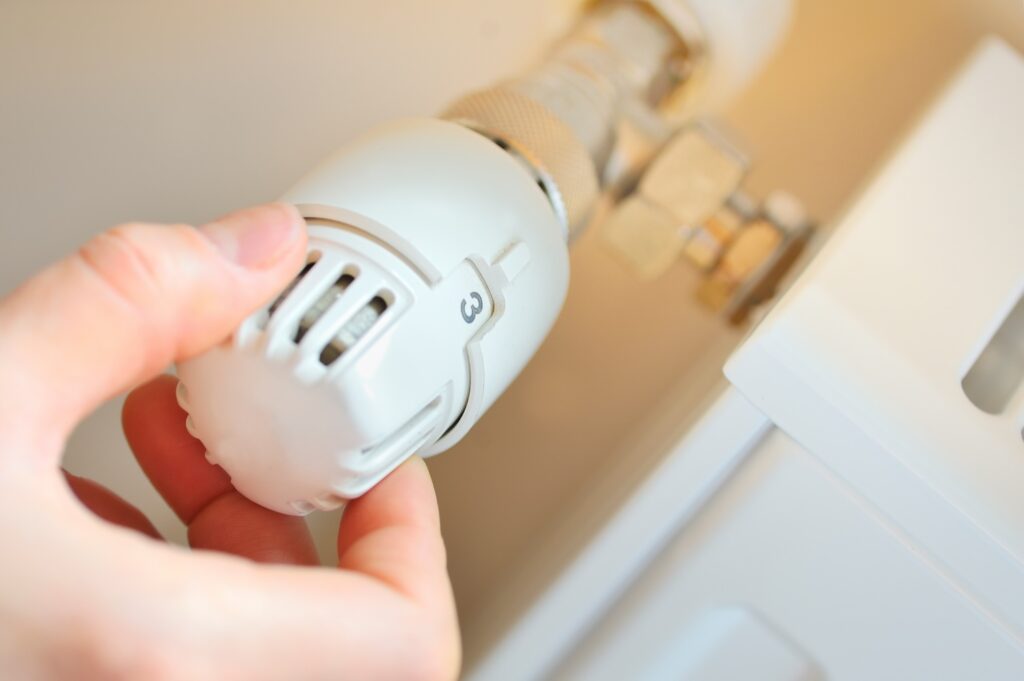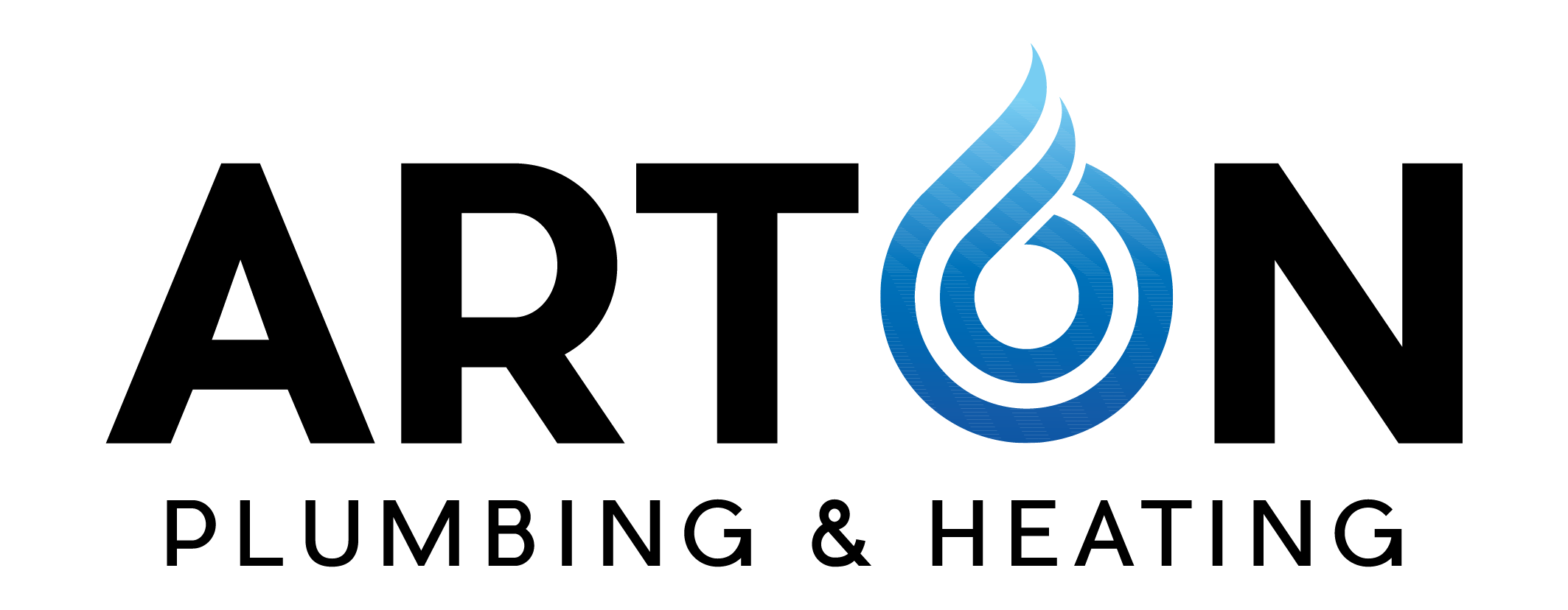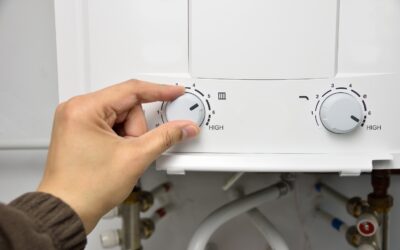Radiators are smarter than you think! Fitted with a thermostatic radiator valve, your radiator can detect the room’s temperature and adjust the flow of hot water accordingly. It may already be doing this without you knowing.
In this blog, we’ll look at how thermostatic radiator valves work and how you can get the most from them.
What is a thermostatic radiator valve?
A thermostatic radiator valve (TRV) is a small device that controls the flow of water into your radiators. It fits on the bit of pipe next to the radiator that goes all the way to the boiler (flow pipe).
A TRV is designed to stop the flow of hot water into the radiator when it detects the room has reached optimum temperature.
The difference between a manual and a thermostatic radiator valve is the amount of control it offers.
With a standard radiator valve, you have limited options. Your radiator is either on or off. On the flip side, a thermostatic valve allows you to set the room temperature within a specific range.
How does a thermostatic radiator valve work?
TRVs have an internal sensor that can detect the temperature in a room. It works using basic physics. Inside the head of the TRV is a sensor that expands when it gets hot and contracts when it’s cool.
The numbers on the side of the radiator valve relate to the room’s temperature, not the radiator’s (this is a common misconception and an important distinction).
When the room reaches the temperature set on the valve, the sensor expands, preventing the flow of hot water into the radiator.
In simple terms, a TRV is designed to prevent a radiator from continually pumping out heat after it reaches temperature, thereby saving energy and money.
What do the numbers on a thermostatic radiator valve mean?
The numbers on your thermostatic radiator valve correspond to room temperature. Here’s how that breaks down:
| 0 | Off |
| * | 7℃ |
| 1 | 10℃ |
| 2 | 15℃ |
| 3 | 20℃ |
| 4 | 25℃ |
| 5 | 30℃ |
The benefit of thermostatic radiator valves is that you can set the temperature for each room separately. In rooms you rarely use, such as a spare bedroom, you can set the radiator to a lower temperature to save energy and money.
Setting the temperature correctly on your TRVs
You should set your radiators to less than or equal to the temperature of the thermostat in your home – but never above.
A thermostatic radiator valve controls the flow of hot water into the radiator, but it doesn’t affect the thermostat connected to your boiler.
If you leave your radiator on the maximum setting, the valve will remain open, costing you money every time you switch your heating on. This directly goes against the point of using TRVs.
Do thermostatic radiator valves save money?
Thermostatic radiator valves prevent you from needlessly heating rooms you don’t use, saving you money on your gas bill.
It also means you can turn the thermostat down on your radiators when you go on holiday to save energy.
Having individual control over your radiators is ideal in winter when the threat of frost looms large. Using the frost setting on your thermostatic valves keeps hot water flowing even in the rooms you use infrequently.
This is good news for your pocket and the environment.

What is a ‘smart’ thermostatic radiator valve?
A smart thermostatic radiator valve (smart TRV) is an advanced version of a traditional TRV. It integrates with other smart home systems to offer additional features.
You can control it via a smartphone app, making it easy to adjust your heating settings from wherever you are – work, the bus stop, or the supermarket!
Additionally, some smart TRVs have advanced scheduling capabilities and adaptive learning algorithms for even greater energy efficiency. Combine this with remote access, and you can benefit from significant energy savings.
Your frequently asked questions
In this section, you’ll find answers to your frequently asked questions on thermostatic radiator valves.
Can you put thermostatic radiator valves on old radiators?
It is possible to install thermostatic radiator valves on old radiators. TRVs come in various sizes and fittings to accommodate different radiator types, including older models.
In some cases, minor modifications or additional adapters may be needed to retrofit TRVs onto older radiators.
Before you go any further, consult a plumbing services and heating company.
How do I fit thermostatic radiator valves?
Fitting thermostatic radiator valves (TRVs) requires basic plumbing skills and tools. If you’re a confident DIY-er, you might be able to attempt this yourself, but for most people, it’s safer to ask for the help of a trained plumber.
Anything involving electricity or water is just not worth the risk. If it goes wrong, you could end up with a disaster on your hands.
Do I need a room thermostat with a TRV?
You don’t need a thermostat in rooms with a TRV fitted. Thermostatic radiator valves have an internal thermostat that does the same job as a room thermostat.
What is the best setting for a thermostatic radiator valve?
The best setting for a thermostatic radiator valve is between two and three. This is between 15 and 20 degrees Celsius. In summer, you can turn down the temperature on your radiators to save money.
If you found this post on thermostatic radiator valves useful, you might also benefit from our guide on how to replace a radiator.



